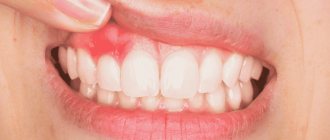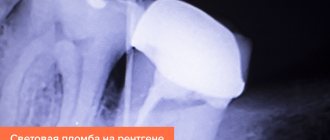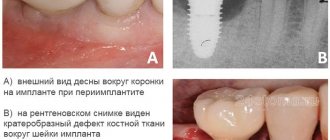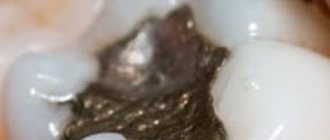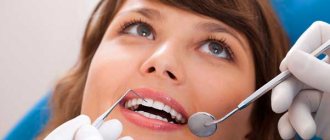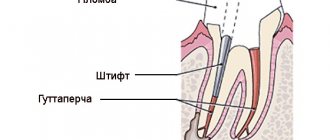An overbite filling is part of a braces system that is used to correct malocclusion. In fact, a removable plate is a temporary filling, which differs from a permanent one in its increased caliber.
Taking into account the location of the anomaly, the plate is installed on the chewing teeth of the lower or upper jaw. Fillings can have different design variations. For example, colored models are often used to treat children. It is noteworthy that it is in childhood that the bite is best corrected.
The surface of overbite fillings is made using a special technology, since it is important to provide the required slope angle, taking into account the specific clinical case. Such products are installed with the aim of closing separated units of the dentition, which contributes to the gradual correction of malocclusions.
Important! Temporary fillings wear out quickly, so they are replaced several times while wearing braces.
Overbite fillings - what are they?
Often teeth in the same row differ slightly in height, some of them may protrude forward or move back slightly. If everything is left as is, over time the situation will worsen: due to incorrect position, individual elements will be subject to increased wear and tear, and over time will begin to deteriorate and collapse, which will become a favorable environment for the development of carious processes. But even with braces, the difference in the height of some teeth does not disappear, and sometimes becomes more pronounced. Overbite fillings will help solve this problem, and this is why they are needed: such overlays do not allow antagonist teeth to contact each other in the wrong plane.
Important! Incorrect contact of opposing teeth on the lower and upper jaws can lead to damage to the brace system and the plates coming off. The teeth themselves are also under attack; for example, there is a risk of serious damage to the enamel and even injury to deeper dental tissues.
Overbite fillings are a kind of overlays for teeth
Thus, a bite filling is a temporary solution, which, unlike standard fillings, has a slightly larger caliber. These are a kind of overlays designed for fixation on both upper and lower crowns, depending on the location of the defect. In pediatric orthodontics, the use of colored materials to create such elements is actively practiced. However, they are not sufficiently durable, so they are changed several times during the entire course of treatment.
All about fillings that will help protect teeth and braces from damage
Many patients, when preparing to install braces, hear from friends or read on forums on the Internet stories about the application of overbite fillings, which cause quite severe discomfort, interfere with chewing, closing the jaws and even speaking. After this, people no longer want to wear braces. It's time to dispel all the myths regarding bite fillings and figure out why they are needed and how to use them correctly.
Indications for installation of overbite fillings
The installed overlay does not allow the jaws to close completely; it prevents close contact between the antagonist teeth, which are still in an incorrect position. Such fillings are fixed after installing braces if there is a risk of damage to the enamel or brackets. Here are the main indications for their installation:
- the teeth on the upper and lower jaws have different heights, which is especially common with abnormally large lower incisors,
- unilateral or bilateral crossbite,
- incorrect relationship between the shapes of the jaw arches,
- strongly protruding upper incisors, which almost completely overlap the lower ones,
- small height of the crowns against the background of strong abrasion of their marginal surface.
Such designs are used for different heights of the upper and lower teeth.
Upon completion of the course of orthodontic treatment, the onlays are removed, and the remaining errors are corrected by filing, permanent filling, or even installing crowns.
Reviews
Along with braces, I had bite fillings installed on two teeth. The first week was very uncomfortable. Unable to chew food. Even my diction changed and a lisp appeared. After some time, I got used to the new position, and my teeth began to gradually straighten out. Therefore, if there is a need to install a seal, then it is better to install it.
Anzhelika, Moscow
They put 4 fillings along with braces. One of them fell off after a month. The doctor changed it, but made it not so large. This was noticeable while eating. I had to wear fillings for almost a year and a half. Therefore, if someone is given them for 6 months, this is nonsense. But now I have the correct bite, good diction and an attractive smile.
Nina, Kostroma
In what cases is installation contraindicated?
Overbite fillings cannot be installed in all cases. For example, such solutions are contraindicated in case of oncological pathologies, systemic lesions of gum and periodontal tissues, allergic reactions and deep caries, if the patient suffers from neuropsychiatric disorders, bruxism (with the exception of a cement filling), tuberculosis, diseases of the blood and hematopoietic organs, or serious disruptions in the functioning of the endocrine system. At the same time, increased demands are placed on maintaining an adequate level of oral hygiene, but this condition is, in principle, true for orthodontic treatment with braces.
Orthodontic treatment in the retention period
The retention period begins immediately after the removal of braces and other orthodontic structures that move teeth and straighten the dentition. At this stage, it is important for the patient to be ready to continue treatment and understand its importance. Often the retention process is not given due attention: a person already sees the result, his teeth are already in the correct position, and additional actions seem unnecessary.
If retention devices are not installed after removing braces, the achieved treatment results will be quickly lost. The tissues displaced under the action of braces will “strive” to return to their original position: the same as it was before the correction. Pathologies of the dental system can not only return in full, but also become more serious, since the use of braces to correct the bite throws it out of balance. Refusal of the retention period provokes occlusion disorders, the jaws stop closing normally, and the chewing load is distributed incorrectly. This can accelerate the abrasion of enamel, lead to the appearance of periodontal diseases, disturbances in the functioning of the temporomandibular joint, etc.
Types of systems and materials used
In orthodontic practice, various models of such products are used, and they can be made of different materials. The choice of a specific solution directly depends on the characteristics of the clinical picture, its complexity, as well as on the design features of the brace system. Let's consider each of the options in more detail.
Classic Katz model
This is a removable palatal structure in the form of a bite plate, which is created from special plastic. The device is fixed on the premolars of the upper jaw using clasps (hooks). The plate itself is not adjacent to the frontal zone, but the support is on the front teeth. The chewing muscles create the necessary pressure, due to which, when the jaws are closed, the force of influence passes to the frontal area.
The photo shows the classic Katz model
This model is mainly used to correct prognathia, an anomaly in which the upper front teeth protrude far forward and overlap the lower incisors. The action of the plate occurs in two directions at once: the front incisors are shortened, and the lateral incisors are lengthened, while the lower teeth and jaw arch are shifted in the right direction1.
Khurgina model with an expanding screw mechanism
The system is often fixed when correcting a deep distal bite due to a narrowing of the upper jaw. Essentially, this is the same Katz model, only supplemented with an expanding screw mechanism, the action of which is aimed at stretching the jaw arches. The model requires only periodic activation, usually once every 5-7 days. Each revolution of the expansion screw creates pressure on the alveolar processes and teeth, promoting a gradual and uniform advancement of the lower jaw forward.
This is what the Khurgina model looks like with an expanding screw mechanism
Artificial dentin (aqueous dentin)
Next we will talk about the materials that are used to create such overlays. So, for example, artificial dentin is created on the basis of distilled water in combination with a special powder, the composition of which includes zinc oxide, sulfate and kaolin. The mixture is diluted with water until a viscous consistency is obtained, after which the required amount is applied to the chewing surface. The composition hardens within 3-4 hours. Among the shortcomings, experts highlight the insufficient strength of the material, which is why dentin lasts only 2-3 days.
Artificial dentin lasts no more than 3 days
Features of using dentin paste
The composition of the material is similar to the previous one with the only difference being that instead of distilled water, clove or peach oil is added to the powder. This component creates an additional antiseptic treatment. For complete hardening of the composition, about 1.5-2 hours are enough. The material is quite sticky, which makes the orthodontist’s work somewhat more difficult. To prevent the paste from sticking to the instrument, I use a cotton swab dipped in water.
Dentin paste is also used for these purposes.
Overbite cement fillings
The cement base is characterized by increased strength and wear resistance. To create such fillings, zinc phosphate or polycarboxylate cement is used. The material is relevant for correcting severe jaw abnormalities. It is even used in cases where the patient suffers from bruxism, the inevitable consequence of which is severe abrasion of the enamel. Among the disadvantages, experts highlight the lack of aesthetics, as well as poor resistance to the aggressive influence of saliva and the moist environment of the oral cavity in general.
Zinc phosphate cement is characterized by strength and wear resistance
Characteristics of polymer materials
These are more elastic materials, with which the installation and dismantling of bite fillings becomes simpler and faster. The composition has good adhesion, due to which it holds tightly and is characterized by increased wear resistance. In this case, there is no need to carry out additional manipulations to process the finished filling. The composition quickly hardens under the influence of a special light lamp.
Structure and features
The bite plates, for the most part, consist of the following elements:
- base platform , which prevents the closure of the dentition;
- metal clasps (clamps, staples) securing the plates
- labial arch , through which the clasps are connected.
In some cases, the plates are fixed not with clasps, but with the help of a rubber rod, when the arch is attached to the molars with special rings.
All designs are equipped with support for the upper palate and front teeth and differ only in some elements. There are separate models that can be removed.
Characteristic features of fillings include:
- affordability;
- adhesion strength to the tooth surface;
- ease of use;
- ease of removal.
A bite filling is used as an onlay and does not harm the tooth surface, but it must be strong enough not to be destroyed when chewing, so the type of material chosen for manufacturing is of great importance.
How the overlays are fixed
Fixation of the filling material is carried out in a dental office. To begin with, the orthodontist prepares the composition, after which he applies the required amount to the teeth, often on both jaws at once, on those elements that come into contact with each other. When using polymer materials, a special LED lamp is used to harden them. At the end of all manipulations, the excess composition is carefully removed - sanded off.
The procedure is completely painless, but problems may arise during the adaptation stage. According to patient reviews, many are faced with pressing questions about how to start eating and talking normally with bite fillings in the mouth. In fact, diction problems and some discomfort at first are completely natural and natural phenomena. There is no need to worry about this, since addiction will still happen. Some people just need a little more time to adapt, others less.
The photo shows a diagram of the installation of a bite filling
How to install the device
The orthodontist takes the appropriate material and simply applies it to the teeth in the required amount, then exposes it to a lamp or other activator. If necessary, the doctor additionally sands off excess material. Does it hurt? No, the procedure is painless, and you can rest assured about the integrity of the teeth on which these types of fillings are placed - the enamel is not subjected to preparation.
What are the advantages?
Installing such elements helps solve a complex of problems at once. Experts in the field of orthodontics include the following functions as additional features:
- faster correction of malocclusion, which is due to additional impact on the dentition,
- reducing traumatic pressure on the gums and jawbone,
- increase in bite height by 2 mm or more,
- improving the quality of chewing food after correction, and therefore eliminating problems with the stomach and digestion,
- reducing the risk of spraining the jaw ligaments and eliminating discomfort during talking and chewing food,
- reducing tooth wear.
With such fillings, bite correction is faster.
Before starting the course of treatment, the patient must undergo preparation: elimination of carious processes, removal of dental plaque, etc. Overbite fillings, although they look like ordinary ones, only slightly enlarged, but they do not protect against the development of caries. Therefore, all pathological phenomena in the oral cavity must be eliminated in advance.
Placing braces only in a healthy mouth
This principle obliges you to undergo preliminary preparation, which involves sanitation of the oral cavity. Before placing braces you must:
- completely cure all caries and pulpitis;
- remove hard and soft plaque from the surface of teeth and from gum pockets;
- cure all foci of inflammation.
This step cannot be avoided: after installing the system in the mouth, favorable conditions will be created for the formation of plaque. It is necessary that the teeth are resistant to bacteria and do not begin to decay while the brackets are attached to the enamel.
Adjustment period, proper care and nutrition
Immediately after the installation of onlays or plates, patients inevitably have questions about how to chew now and get rid of a lisp if the jaws do not close completely. Everyone experiences discomfort while eating and talking, but over time the jaws adapt, diction is restored, the person begins to chew food normally and no longer experiences significant discomfort. If the discomfort turns into intense pain, it is better to contact your orthodontist - the system may be installed incorrectly.
“At one time I spent about 9 months with a bite plate. I admit, it was not easy for me personally. At first it was very difficult to chew. I constantly bit my tongue and swallowed large pieces. Then everything became easier. You just need to get used to them, get the hang of it. After they were removed, I got used to it again for about a week. It felt like there were no teeth in my mouth at all. In general, it’s not a particularly pleasant thing, but it’s necessary, so what can you do..."
LevaX, from correspondence on the forum www.32top.ru
As for care, the presence of such additional corrective elements in the mouth does not require any additional manipulations other than those that constitute the basic rules of oral hygiene. But it’s better to reconsider your diet. On the other hand, the recommendations are the same as after installing braces without any additional elements:
- priority should be soft and liquid foods, such as purees, soups and yoghurts,
- It is better to cut the products into small pieces,
- you will have to give up too hard and viscous foods,
- You should avoid biting into hard vegetables and fruits,
- no nuts, seeds, chewing gum or toffees during the entire correction period.
If the filling is damaged, just like if a brace breaks or comes off, you should contact your orthodontist as soon as possible. He will correct or completely replace the damaged element.
Nutrition rules: what you can and cannot eat
The rules here are standard - if you wear braces, you already have to put up with them:
- Eliminate solid foods from your diet to avoid damaging your bite fillings: say no to nuts, whole fruits and vegetables, candies,
- impose a ban on crumbly and sticky foods so that the fillings do not fall out prematurely: you cannot eat cookies, toffees, chips and crackers,
- Avoid food that is too hot or too cold to avoid damaging the integrity of the materials.
At first, during the period of getting used to the structures and when feeling severe discomfort, patients on various forums advise each other to eat soups and purees, as well as dishes crushed using a blender. This is not without meaning, but still it is not worth switching to such food on an ongoing basis - the jaw system must receive a load and function fully.
Overbite fillings and plates are different concepts
In orthodontic practice, special plates are also actively used, which prevent the jaws from completely closing in order to avoid injury to the teeth and parts of the brace system. Unlike single linings, these are more complex designs, which include the Katz and Khurgina models. Typically such a device includes the following elements:
- an arc that connects the clasps to each other,
- a plate that helps move teeth in the desired direction,
- clasps are hooks that are fixed on the supporting teeth.
Overbite filling (Katz model) and plates are different concepts.
The plate is attached in the palatal position on the front teeth. Such a device additionally helps to relax the chewing muscles, which are often toned due to the presence of a large number of non-removable elements in the mouth. Sometimes elastic rods are used instead of clasps to secure the structure.
Contraindications and side effects
A contraindication for installation is tooth decay, which requires preliminary restoration of the integrity of the walls. Protection is not done if the constituent components are intolerant. Infections of the oral cavity and some endocrine diseases may also be a contraindication to the use of a temporary structure.
On a note!
Often, after installation, patients are faced with the fact that they do not know how to chew food. Discomfort occurs due to the fact that the material does not allow the teeth to close in their previous usual position. The patient needs to be patient. The adaptation period lasts on average 1 – 7 days. After this, the patient gets used to the new conditions, which will still have to be adapted to after the bite is corrected.
What to do if the material is damaged
During orthodontic treatment, the patient will in any case have to visit his orthodontist at least once every couple of months, or even more often - it is necessary to adjust the system and carefully monitor the strength of its effect on the teeth and bite as a whole. Overbite fillings are usually not durable and wear-resistant, so they will have to be changed more than once during the entire course of therapy. This is also associated with their frequent damage and loss. If the material has chipped, the problem can be corrected by touch-up. For more serious injuries, the doctor will simply replace it.
The use of bite fillings and plates allows not only to protect teeth from abrasion and destruction, but also to prevent damage to brackets, and also to significantly speed up the process of correcting defects - making treatment faster and more effective.
- Gerasimov S.N. Fixed orthodontic technique, 2002.
Description of overlays
Overbite fillings are needed to regulate the contact of the chewing teeth of the two jaws with each other and with the brace system. In appearance, such overlays resemble classic fillings, but most often they are made from a special colored material. Such overlays allow better control over the process of correcting the bite and regulate the position of the units relative to each other.
As a result, the teeth do not rub against each other too much, which helps maintain the integrity of the enamel. The overlays also protect against accidental peeling of staples and shorten the period of bite correction. In addition, they allow you to restore the chewing function of the jaw and evenly distribute the load on the teeth, joints and muscles while chewing food.
Typically, the onlays are worn for as long as orthodontic treatment continues. But the final service life is determined by the dentist individually and only based on the results of the patient’s examination. Fillings do not require special care, but, unfortunately, they have a short service life and sometimes need to be replaced.
general characteristics
In orthodontics, overbite fillings are temporary overlays on the chewing surface of molars.
Otherwise, the type of filling in question is called a bite plate in dentistry. Typically, appliances are placed on the maxillary or mandibular occlusal elements. They are made from a variety of materials and come in different colors. During the course of bite correction, they can repeatedly crumble and split, so they are applied several times.
After applying the filling, the patient experiences discomfort for the first few days, because he is not able to fully connect the jaws and chew food. Over time, the discomfort goes away.
The main purpose of orthodontic fillings is to eliminate moments when the maxillary frontal units, when closing the mouth, touch the braces system, thereby deforming and violating its integrity.
Restoring damaged braces always requires additional material resources and time, which is unacceptable for some categories of patients. In addition, the correction of the bite itself is not a cheap procedure, it requires regular visits to the doctor and takes a long time.
Therefore, in order to shorten the course of treatment, ensure the correct alignment of dental elements, create temporary height for worn teeth, or for low crown parts, the type of filling in question was invented.
The design of most plate options consists of 3 elements:
- The base platform, which helps ensure that the rows do not close in the adjustment area.
- Lip arch connecting the clasps.
- Clasps that secure the plate in the oral cavity.
In some clinical cases, instead of clasps, specialists use rods made of plastic rubber, or a labial arch attached with special rings to the molars.
Overbite fillings are an integral part of the braces system, which is installed to straighten the dentition and correct bite defects.
The plate is essentially a large-caliber temporary filling. It is installed on the upper or lower teeth that have a chewing function, depending on what specific dental problems need to be eliminated.
The bite plate has a special platform, machined with a certain angle of inclination. As a result of wearing such plates, the separated teeth close together, and the bite is gradually corrected.
Advantages and disadvantages
Contraindications are associated with:
- With diseases of the endocrine or cardiovascular systems, as well as with chronic inflammatory diseases of the oral cavity
- Persistent pain while wearing, eating, talking.
- A destroyed plate, if the material used in its manufacture turned out to be of poor quality and/or defective.
- The need for mandatory preliminary prosthetics if one or more teeth are missing on either side of the jaws. The bite can be corrected only after this, but the process will be complicated by the presence of dentures or crowns in the mouth; its dynamics in this case change.
Advantages:
- Correction of dental defects in the shortest possible time, compared to the non-use of bite fillings.
- Reducing or even completely eliminating damage to bracket arches or all fastenings on the teeth of opposite jaws.
- Painless bite correction.
- Elimination of inevitable pathologies in the form of pressure on tissues, which always accompany tooth shifting during braces.
- Normalization of the secretion of digestive enzymes associated with good grinding of food in the mouth.
- Guaranteed, repeatedly tested hypoallergenicity of the components included in the bite fillings.
Children's and adult fillings are practically no different. The only difference may be that brightly colored material is used for children: blue, orange, red. “Adult” fillings are usually white, matching the color of the teeth. Sometimes they are colorless and transparent.
Hygiene
In addition to installing braces and fillings, you should know the basic rules for maintaining oral hygiene:
- Before putting on the removable plate, it should be rinsed with clean water. There are special solutions in which the plate should be immersed while brushing teeth or eating. If the Khurgina system is used, the sliding screw is additionally lubricated with vegetable oil.
- To brush your teeth, it is recommended to use a soft-fiber toothbrush, as well as toothpaste prescribed by your doctor.
- If the patient’s life is closely connected with sports, then it is recommended to remove the device during physical activity.
- In addition to the solution, it is recommended to use special gels that additionally disinfect the surface of the plates and also remove unpleasant odors.
Following the above recommendations reduces the risk of caries, bleeding gums and other diseases associated with the oral cavity.
Principle of operation
Overbite pads prevent complete closure of the jaw arches when chewing food during the correction of defects with braces. Product functions include:
- Reducing pressure on the jaws themselves and the elements that play a major role in chewing, i.e. on molars.
- Reducing the load on the tissues of straightened teeth, which helps reduce the likelihood of developing periodontal inflammation, caries and damage to the enamel coating.
- Protection of the entire corrective system from deformation, breakage and displacement.
Overbite plates prevent complete closure of the upper and lower teeth during chewing with braces installed. Their action is designed to:
- with braces installed, reduce pressure on the jaws and molars, that is, the teeth on the right and left sides of the jaws, which have a major role in the chewing process;
- reduce pressure on the bone structure and soft tissues around the teeth, which significantly reduces the risk of developing inflammatory periodontal diseases, caries, and enamel damage;
- protect the entire structure of the braces from displacement.
When installing bite fillings, the patient usually experiences some discomfort due to the inability to fully close the jaws when chewing, but the unpleasant sensation soon passes.
What does the choice depend on?
In order to get a positive effect from the use of bite plates, the doctor must choose the right material and their model.
The specialist must take into account the following factors:
- The degree of prognathia, i.e. the height of one jaw in relation to the other.
- General condition and anatomical features of all teeth.
- The age of the person.
- The condition of the gums and their tendency to disease.
- The severity of malocclusion.
Based on statistical data, we can conclude that the first changes in the bite become visible after 3-4 months, and when treating children - only after 6-8 months.
The use of plates allows not only to improve the overall aesthetics of the face, but also to cope with other pathological conditions:
- problems with the digestive system;
- stretching of the maxilloligamentous apparatus;
- constant pain in the neck;
- periodontal diseases;
- soreness in the facial muscles;
- chronic form of migraine.
The use of the described plates also makes it possible to reduce the load on the maxillary arch and increase the height of the bite to 0.2 cm. In addition, the rate of enamel abrasion and the risk of developing a carious process are reduced.
According to statistics, the therapeutic effect achieved by using these plates, in most cases, allows you to correct your bite in three or four months. When corrected in childhood, this time increases to six months.
When using fillings, not only the problem of an aesthetic nature is solved, but also a number of other pathologies are corrected, namely:
- problems of the digestive system that arise from improper chewing;
- chronic neck pain;
- sprain of the maxillary ligamentous apparatus;
- periodontal diseases acquired as a result of increased pressure of teeth on soft tissues during chewing;
- pain in the facial muscles;
- chronic migraines.
The choice of a specific type of plate is made by the dentist, taking into account the individual characteristics of the body and malocclusion and depends on:
- the degree of prognathia, that is, the protrusion of the upper jaw relative to the lower jaw;
- the condition of the patient's teeth;
- gum condition and susceptibility to periodontal disease;
- dental health status;
- patient's age.
How to care for the plates?
In order for the plate to serve the required time and not break, it is necessary to provide it with appropriate care. It is as follows:
- brushing with toothpaste every day;
- disinfection every week;
- storage in a special container, closed;
- oiling the screw;
- removing the plate while eating, brushing teeth, practicing martial arts, boxing and water sports.
Do you dream of beautiful teeth? Contact the orthodontists of the multidisciplinary clinic CELT!
Make an appointment through the application or by calling +7 +7 We work every day:
- Monday—Friday: 8.00—20.00
- Saturday: 8.00–18.00
- Sunday is a day off
The nearest metro and MCC stations to the clinic:
- Highway of Enthusiasts or Perovo
- Partisan
- Enthusiast Highway
Driving directions



